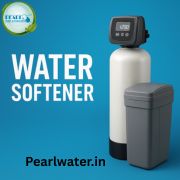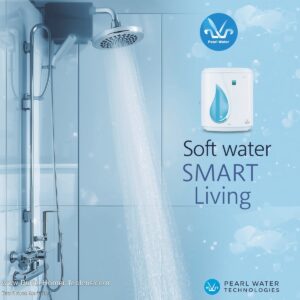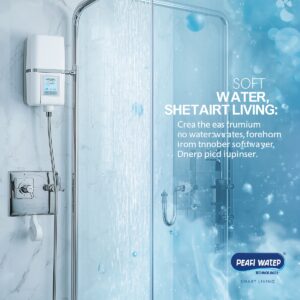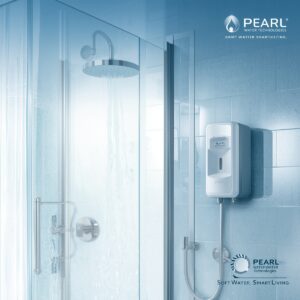Introduction
Clean drinking water is essential for a healthy life, but tap water often contains chlorine, pesticides, and unpleasant odors. The Pre Carbon Filter plays a crucial role in improving water quality before it reaches your glass. Acting as the first line of defense, this small yet powerful component ensures your water is free from harmful chemicals and tastes fresh.
What Is a Pre Carbon Filter?
A Pre Carbon Filter is a key part of most RO (Reverse Osmosis) and water purification systems. It uses activated carbon to trap organic impurities, chlorine, and other harmful chemicals. Essentially, it protects the main RO membrane from damage, ensuring your system performs efficiently for a longer time.
The Science Behind Carbon Filtration
Activated carbon is a form of carbon treated with oxygen to create millions of tiny pores. These pores increase the surface area, allowing the filter to trap more contaminants. Think of it like a sponge soaking up bad odors and chemicals — except this sponge works at a microscopic level!
Types of Carbon Used in Filters
4.1 Activated Carbon Block (ACB)
ACB filters compress carbon into a solid block, providing a higher surface area and better contaminant removal efficiency. They are great at removing chlorine, taste, and odor.
4.2 Granular Activated Carbon (GAC)
GAC filters use loose granules of carbon, allowing water to pass through more quickly. These are effective for removing organic compounds and improving taste and smell.
How a Pre Carbon Filter Works
When water enters the pre-carbon filter, it passes through layers of activated carbon. The carbon adsorbs (not absorbs!) contaminants like chlorine, volatile organic compounds (VOCs), and pesticides. This prevents chemical damage to the RO membrane that follows in the filtration process.
Importance of Pre Carbon Filters in RO Systems
Without a pre-carbon filter, chlorine and other oxidants can break down the delicate RO membrane. This leads to costly repairs and poor water quality. By removing these chemicals early, the pre-carbon filter extends the lifespan of your purification system.
Contaminants Removed by Pre Carbon Filters
Chlorine and chloramine
Pesticides and herbicides
Volatile Organic Compounds (VOCs)
Bad taste and odor-causing agents
Organic sediments
Difference Between Pre and Post Carbon Filters
While both filters use activated carbon, their roles are different:
Pre Carbon Filter – Positioned before the RO membrane; removes chlorine and chemical impurities.
Post Carbon Filter – Installed after RO; polishes the water for final taste enhancement.
Advantages of Installing a Pre Carbon Filter
Protects RO membrane from chemical damage
Improves taste and odor of water
Enhances overall filtration performance
Reduces maintenance costs
Provides healthier, better-tasting drinking water
Maintenance Tips for Pre Carbon Filters
To keep your filter effective:
Replace every 6 to 12 months depending on water quality
Avoid using with extremely dirty water without a pre-sediment filter
Always flush the system after installation or replacement
When to Replace Your Pre Carbon Filter
If your water starts to taste strange, smells bad, or the flow rate drops — it’s time to replace the filter. Ignoring this can lead to clogged membranes and reduced water purity.
Common Myths About Carbon Filters
Myth 1: Carbon filters remove all impurities.
Fact: They mainly remove chlorine, chemicals, and organic compounds — not dissolved salts or microbes.
Myth 2: Carbon filters last forever.
Fact: They need timely replacement for best results.
Myth 3: Bigger filters always perform better.
Fact: Efficiency depends on carbon quality, not size alone.
Environmental Benefits of Using Carbon Filters
Using a carbon filter reduces dependency on bottled water, minimizing plastic waste. Many carbon filters are also made from eco-friendly materials like coconut shells, making them a sustainable choice for modern homes.
How to Choose the Right Pre Carbon Filter
When buying a pre-carbon filter, consider:
Compatibility with your RO system
Type (ACB or GAC)
Flow rate and capacity
Brand reputation and certifications
A high-quality filter from trusted brands like Pearl Water Technologies ensures consistent performance and durability.
Conclusion
A Pre Carbon Filter might seem like a small component, but its role in protecting your RO system and ensuring clean, fresh-tasting water is vital. Regular maintenance and timely replacement can make all the difference in your water quality and system performance.
So next time you enjoy a glass of pure, refreshing water — remember to thank your pre-carbon filter!
FAQs
1. How often should I replace a pre-carbon filter?
Usually every 6–12 months, depending on water quality and usage.
2. Does a pre-carbon filter remove bacteria?
No, it mainly removes chlorine, chemicals, and odors, not microbes.
3. Can I use a GAC filter instead of an ACB filter?
Yes, but ACB filters often provide more efficient filtration for taste and chlorine removal.
4. What happens if I don’t replace the pre-carbon filter?
Chlorine can damage the RO membrane, leading to poor water quality and higher maintenance costs.
5. Is a pre-carbon filter necessary in all RO systems?
Absolutely! It’s essential for protecting the RO membrane and improving the taste and safety of your water.



